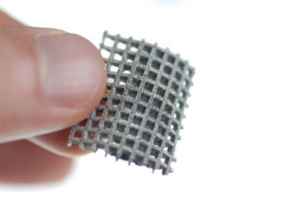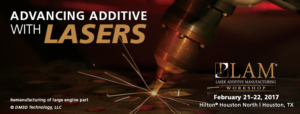With the Laser Additive Manufacturing Workshop (LAM®) just around the corner, Lasers Today is taking a closer look at some of the topics presented at this year’s event.

LAM 2017 brings researchers and industry leaders together to discuss advances in the world of additive manufacturing. Around the world, exciting innovations are coming to light, many of which will be discussed at this year’s event. One country that is seeing significant progress within its additive manufacturing initiatives is China.
Rounding out the final session at LAM is “Progress and Medical Applications in Additive Manufacturing of Metal Parts by Selective Laser Melting” by Yongqiang Yang of South China University of Technology. The use of additive manufacturing for medical purposes is a growing area of interest for many. While there are still significant challenges and obstacles ahead, the work performed at the South China University of Technology (SCUT), and across the nation, is notable to anyone involved with, or intrigued by, the possibilities presented by additive manufacturing within the medical field.
About Selective Laser Melting (SLM)
Selective Laser Melting (SLM) is being used by researchers to 3D print medical implants. SLM is used both for coating and completely creating the implant parts. Materials used usually include platinum, nickel titanium, and in some prototypes, stainless steel. One of the biggest challenges faced by researchers and developers is the risk of infection and/or rejection of the implant within the body.

Additive Manufacturing in China
China’s history with additive manufacturing begins in the early 90’s, where a push for research on additive manufacturing processes, equipment, applications, as well as education began. Schools, such as SCUT, emphasize hands-on practice and application within their programs. For over two decades, universities and other higher education facilities have given students opportunities to “compete” in various design competitions, pushing innovation as part of the learning process.
In partnership with specific industries, especially the companies within them, various programs have given students the opportunity to pursue specialties and specific interests within additive manufacturing, providing relevant work experience. In doing so, additive manufacturing is now considered one of the biggest areas of market growth within China, in decades. In fact, the undergraduate programs have lead to an overall increase in the quality of programs in science, engineering, mathematics and more.
However, there is a call for more progress within the medical applications of additive manufacturing, particularly with implants and tissue engineering. The longevity of the prototypes created pose unwanted side effects, rejection, and infection risks that still stand to be solved.
A Successful Implant at South China University of Technology (SCUT)
When thinking of 3D printed implants, it is easy to assume that the applications are only for human benefit. However, this is not always the case. Last summer, SCUT in collaboration with Leader Animal Hospital and Guangzhou Yang Ming Technology Company outfitted an injured red-crowned crane with a new, 3D printed beak.
After a fight with other birds led to a severe beak injury the crane was unable to eat.. Guangzhou Yang Ming Technology Company, which specializes in designing molds for 3D printing, passed their mold design to SCUT, who printed the new beak out of titanium. Titanium has shown promise in other instances as a preferred material for implants for humans, due it its biocompatibility.
The procedure in which they attached the new beak was successful, allowing the bird to eat shortly after the process. The red-crowned crane received the first successful beak transplant in China, joining a growing list of successful 3D-printed implant procedures on birds.
These successful procedures increase the likeliness of 3D printed implants becoming a viable solution for more than just birds. Advancements within additive manufacturing, including selective laser sintering, are opening many doors for the future of the medical industry.
Be sure to catch the presentation at LAM 2017 as part of two exciting additive manufacturing application sessions. Check out the advance program for LAM here to plan your visit to this year’s event. LAM 2017 will take place February 21-22, 2017 in Houston, Texas. For more information, and to register, click here.

Don’t miss a single laser industry update! Visit Lasers Today and sign up to receive the latest in lasers delivered directly to your inbox.
The Laser Institute of America (LIA) is the international society for laser applications and safety. Our mission is to foster lasers, laser applications and laser safety worldwide.





